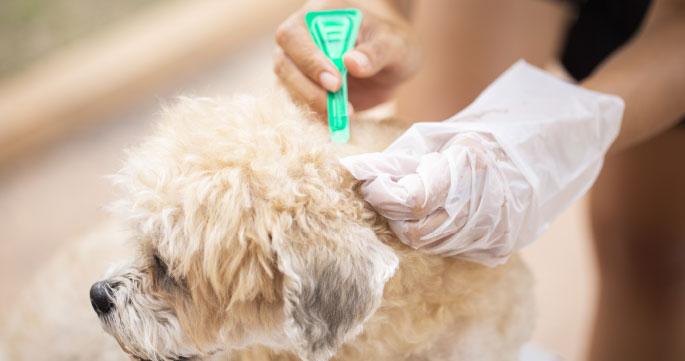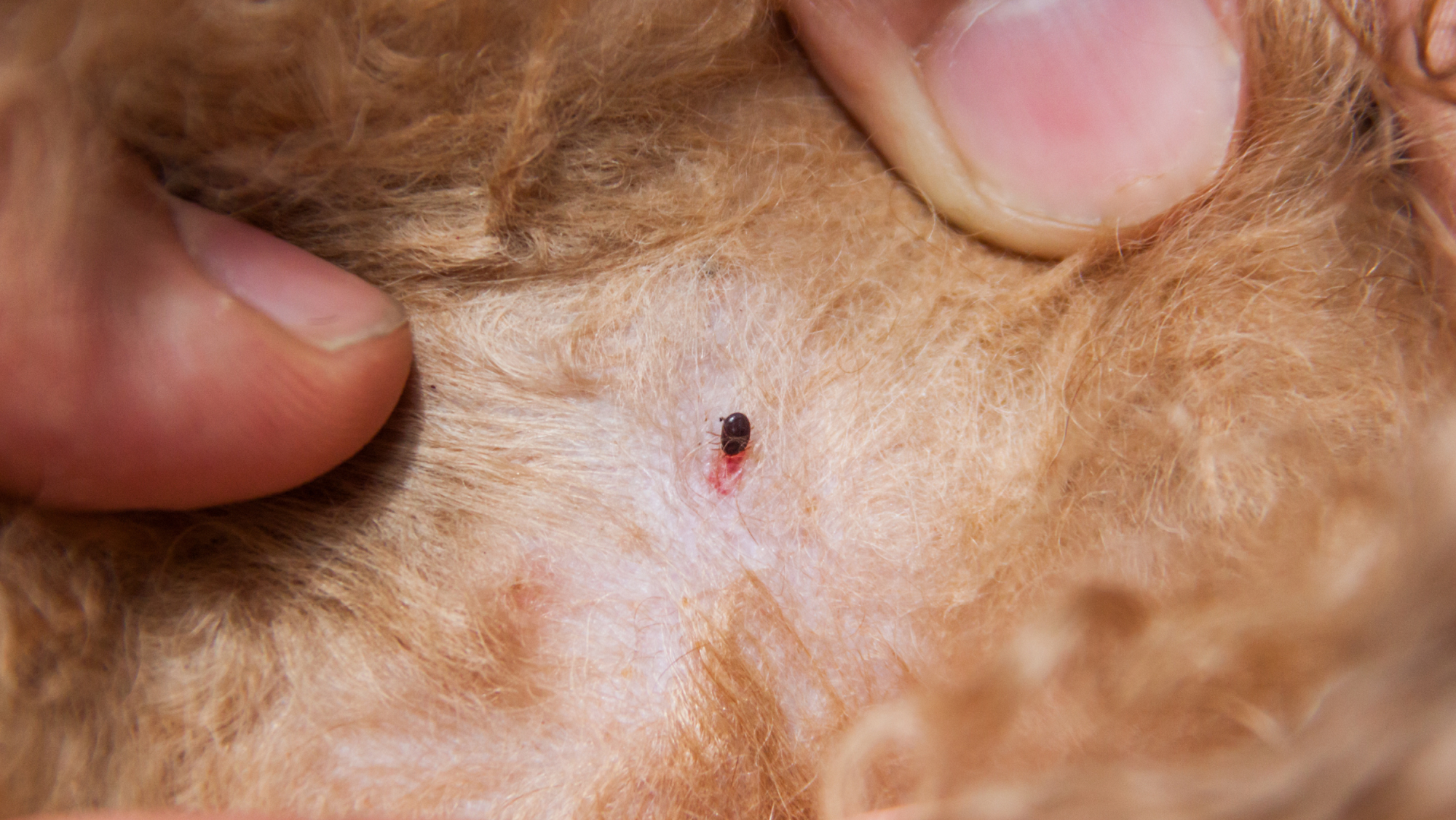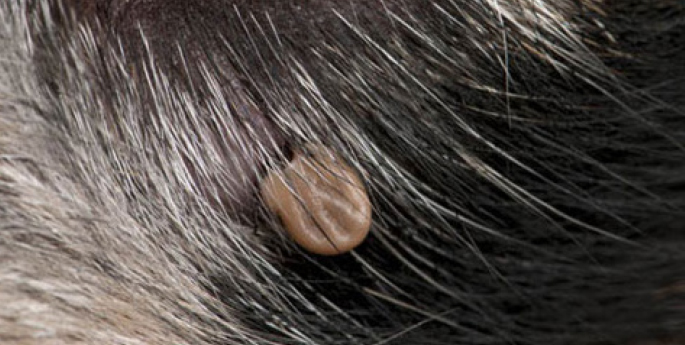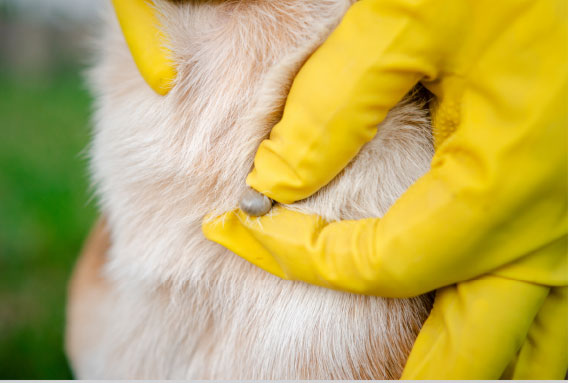Flea & Tick Control
Flea Control
Fleas can be distressing for your pet, but they're more than just a nuisance.
Fleas are one of the more common parasites pets encounter. Not only can they cause skin disease, but can transmit a range of infectious or parasitic diseases, some of which can be transmitted to humans. In some animals fleas can also trigger an allergic reaction called Flea Allergy Dermatitis (FAD), a skin disease that is intensely itchy and can result in hair loss and skin infections. Even a small number of fleas can cause intense skin irritation to pets prone to FAD, meaning year-round flea control is essential!
The most common way pets pick up fleas is from their environment. Your pet can pick up fleas on a walk, playing in the dog park, at the beach, or even in the backyard. Fleas rarely jump from pet to pet, most often infesting and clinging to one host.




Spotting fleas isn’t always easy – they are small and fast, and all pets range in what symptoms they show. Some cats and dogs can show signs of severe itchiness and irritation when only a few fleas are present, whilst others won't present symptoms until the infestation grows. A major point to consider is that the adult fleas you see on your pet are only part of the problem.
You might be surprised to learn that adult fleas (the ones you see) make up only about 5% of the total population of a flea infestation. The remaining 95% (eggs, larvae and pupae) are found in carpets and bedding - in fact anywhere in your house! Each female flea can lay up to 50 eggs per day, so it doesn’t take long for an infestation to take hold.
It's important to remember that fleas aren’t just a problem in the summer. Flea infestations can happen at any time, so we highly recommend using flea control all-year-round. You and your pet will be happier for it!
Tick Control
The most common varieties of ticks infesting dogs in Australia are the paralysis tick, the brown dog tick, and the bush tick.
Paralysis ticks
The paralysis tick (Ixodesholocyclus) is one of the most dangerous parasites your pet can catch. Tick paralysis is estimated to affect tens of thousands of dogs and cats per year in Australia, with many animals dying from tick toxicity and associated complications. The disease can be seen throughout the year, but the greatest risk comes with the spike in numbers of adult ticks in spring and summer. Paralysis ticks are found on the east coast of Australia, from northern Queensland to Victoria.


How does the paralysis tick cause toxicity?
When the tick has attaches to a host and sucks their blood, it secretes a toxin that can cause severe illness or even death in cats and dogs. Pets of any age can be affected, though younger animals are at higher risk of fatality.
Signs of tick paralysis include: loss of coordination in the hind legs (wobbly or not being able to get up) which may progress to the front legs, change in bark or meow, retching, coughing or vomiting, loss of appetite, lethargy, or laboured or rapid breathing. One or any combination of these symptoms may indicate the presence of a paralysis tick. If you notice any of the aforementioned signs you should seek veterinary attention as soon as possible.
Tips for reducing the risk of tick paralysis include:
- The year-round use of effective tick control products for all dogs and cats that are living in, or travelling to, known paralysis tick regions.
- Search your pet daily for ticks - although tick control products will greatly reduce the risk of tick paralysis, it only takes one tick to cause tick paralysis. Performing a daily tick search is a quick and simple task that can be done in a few minutes whilst brushing or patting your pet.
- Reduce chance of exposure to ticks in the environment (e.g. clean up fallen leaves, litter and debris, minimise or restrict your pet’s access to bushy environments). Exercise your pet in pet-friendly parks, areas that are paved or have well-maintained grass.
- If you find a tick remove it immediately and seek prompt veterinary attention. Remove the tick by wedging a fingernail, or a tick removal tool under the tick's mouth (or grasping with tweezers) and twisting as you pull the tick away. Do not grab the tick's body. Time is the most important factor in successful treatment.
Brown dog ticks and bush ticks
Brown dog ticks and bush ticks do not cause tick paralysis, but can cause skin irritation and transmit other dangerous diseases (e.g. Babesia parasites which invade the red blood cells of dogs causing anaemia, which can be fatal).
We're always here for advice and guidance! For recommendations of appropriate tick control products for your pet or instructions on how to do a thorough tick search please call us on (02) 6033 3777